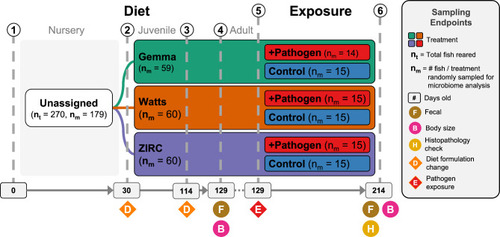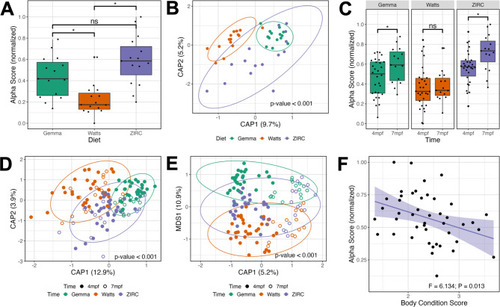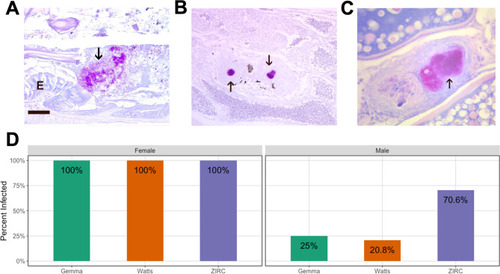- Title
-
Disentangling the link between zebrafish diet, gut microbiome succession, and Mycobacterium chelonae infection
- Authors
- Sieler, M.J., Al-Samarrie, C.E., Kasschau, K.D., Varga, Z.M., Kent, M.L., Sharpton, T.J.
- Source
- Full text @ Anim Microbiome
|
Experimental design showing treatments and husbandry events during the course of the study. Symbols indicate when an event occurred. (1) 270 fish were reared from 0 to 30 days post fertilization (dpf) on a nursery diet across 18 tanks (15 fish per tank). (2) At 30 dpf, fish were assigned one of three diets (e.g., Gemma, Watts, or ZIRC), and fed a juvenile formulation until 114 dpf. (3) At 114 dpf, fish were switched to an adult formulation of their respective diets. (4) At 129 dpf, body size measurements were conducted on all fish and fecal samples were collected from a random selection of five fish per tank (n = 90). (5) Afterwards, a cohort of fish from each diet were exposed to |
|
Effects of 129 days post fertilization (dpf) fish fed one of three diets (Gemma, Watts, or ZIRC) on physiology and microbiomes of zebrafish. |
|
Development is associated with altered microbiome composition. |
|
Histologic sections stained with Kinyon’s acid fast stain in zebrafish exposed to |
|
Exposure to |





